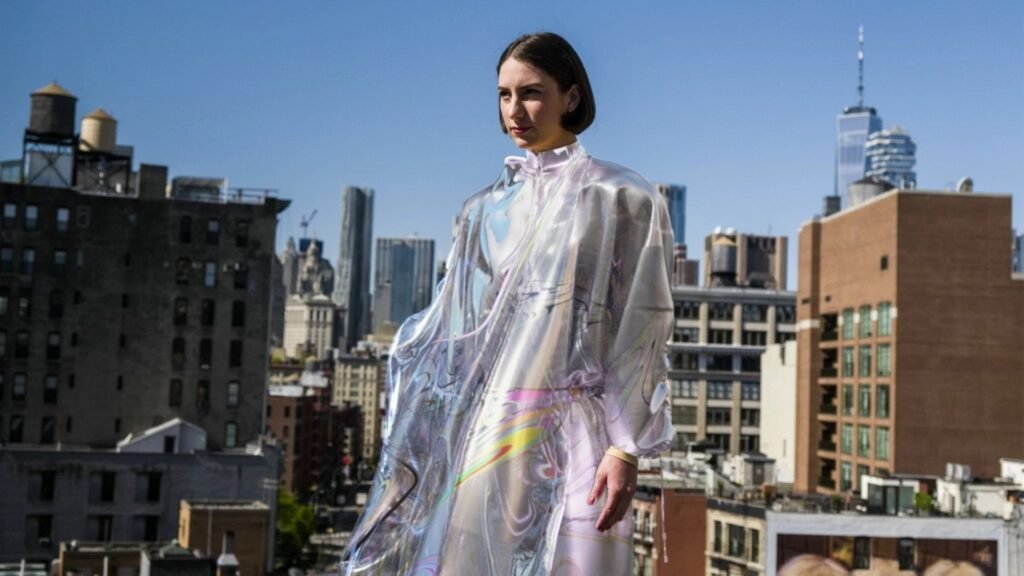Let me ask you something – How confused does the term “digital fashion” make you? Do you feel like you are the only one who is left in the room for having the least amount of knowledge on this topic? Are all the super-cool terms that are used to discuss “digital fashion” super-critical for you?
But even after all of these, you are still concerned about the fashion industry, climate crisis, our planet, people, and the future? Well! Firstly, let’s just say that you are not alone in this! Cheers! Secondly, let’s try to understand the topic ( as much as possible with all my abilities and limitations! ) in a really easy language, shall we?
Understanding Digital Fashion

Most of us probably know that there are people who don’t like to appear on social media in the same dress twice! This irresponsible behavior costs us natural resources and leaves us with waste and pollution.
Digital fashion was actually born to solve this problem. The idea of making your avatar in a computer game just as you like it was there for quite a long time and digital fashion took this idea to another level by offering consumers to buy virtual dresses by making clothes using pixels rather than fabrics.
The final product of this genre of fashion can be divided into two kinds. One is when a 3D-designed dress is fed into a 3D printer and as the result, the exact same dress comes out. The second one is when a 3D-designed dress is used as a virtual product for virtual platforms.
The evolution of Digital Fashion
In 2018, Carlings, a Scandinavian retailer released an all-digital collection called Neo X. Customers provided a photo to Carlings to be digitally tailored and the designers edited the clothing onto the customer. Pretty cool, right?
Now in 2022, within 4 years the whole digital fashion-centric scenario changed a lot – there are businesses like Fabricant, the world’s first digital-only fashion house, and the Helsinki Fashion Week held their entire program virtually on Digital Village; a social metaverse, Instagram influencer Lil Miquela who has over 3 million followers is advocating for digital fashion. Even now we have institutions that are teaching digital fashion as a completely different subject.
It is not tough to understand that when it comes to manufacturing, digital fashion is greener than the regular fashion industry. According to Daria Shapovalova and Natalia Modenova, the owners of Dress X, the production of their digital garments emits 97% less CO2 than a physical garment. Also, It was also found that a digital garment, on average, saves 3300 liters of water per item.
The carbon footprint of the Helsinki Fashion Week also proved that positive changes are possible with the help of digital fashion. It was found by the HFW that the carbon footprint per visitor dropped from 137kg to 0.66kg CO2e after shifting to completely digital. This is surely remarkable because another study conducted in 2020 looked at the carbon emissions produced by buyers and designers traveling to the four major fashion weeks (New York, London, Paris, and Milan). The total emissions were found to be 241,000 tonnes of CO2e, which is the equivalent of 51,000 cars on the road or 3,060 years of lighting the Eiffel Tower.
I know what you are thinking right now ( if you are not bored yet and still here with me! ) – it seems like major problems of the conventional fashion industry are being solved with the help of digital fashion. But is there any catch? Let’s find out together!
Let’s talk about Sustainability now…

So, the catch is that these digital designs are mostly saved as something called NFT. Non-fungible tokens are the meaning of NFT ( but that doesn’t make it easier to understand, I know :/ ). A non-fungible token means it is something that is unique and can’t be replaced with something else. Let me try to make it a bit clearer, bitcoin or any other currency is a form of a fungible token which means you can exchange your currency with another currency and the value of your wealth will still remain the same. But, an NFT is a one-of-a-kind trading card and if you try to exchange that, you will have something which is completely different from the NFT. The fun fact is every kind of art that exists digitally can be saved as NFT and it is possible for artists and designers to own and sell those too.
In the digital fashion industry, the designs or the clothes are mostly saved as NFT and they are recorded on Ethereum, which is a blockchain-based platform and has its own cryptocurrency. Now the catch is that, for saving these NFTs and for the transaction of these NFTs, a huge amount of energy is needed. Previously the power consumed by one single Ethereum transaction is equivalent to that of an average US household over 8.65 days! But the good news is that Ethereum has successfully made its system more eco-friendly by shifting to a new mechanism, known as proof-of-stake which helped them to cut its energy usage and carbon footprint by approximately 99.99% each according to the Crypto Carbon Ratings Institute.
But, the problem of overproduction and overconsumption still exists and the industry of digital fashion is still unable to address this issue. ”Digital is not necessarily always less impactful on the environment. We are producing far more than we actually need, and producing more digitally does not resolve that issue,” said Céline Semaan, the executive director of Slow Factory Foundation who was quoted in an article on Refinery.
Overcoming the problems which are social, economic, and environmental created by the fashion industry is surely challenging. We are talking about an industry that produces over 100 billion pieces of clothing in a year, generates 92 million tons of waste that end up in landfills, which is responsible for 35% of the microplastic pollution which leaks into water and for 10% of all global carbon emissions and worth $1.5 trillion globally.
It is true that, though digital fashion is addressing many of these problems, solving them completely is most likely impossible for it. For genuine change to happen, not only the digital one but the whole fashion industry still has a long way to go.







